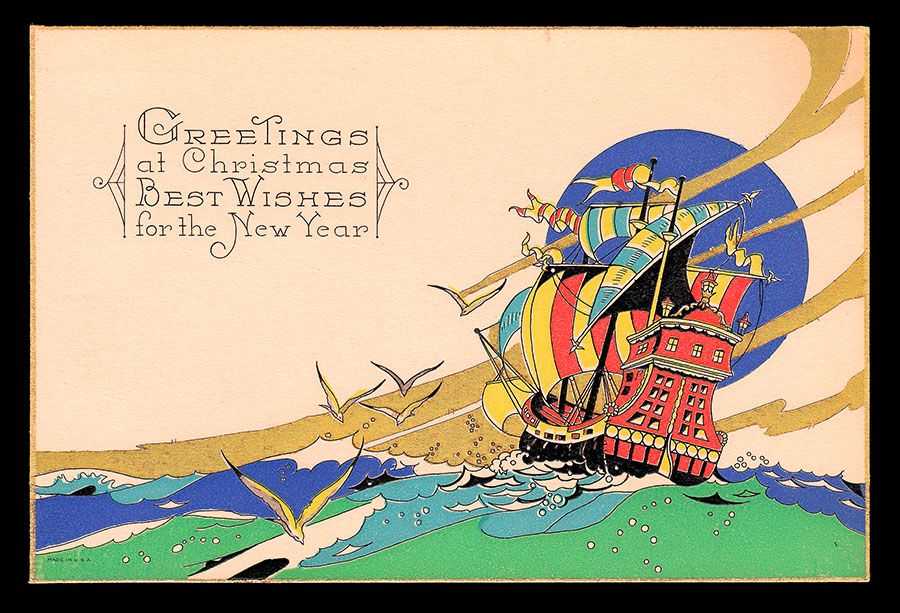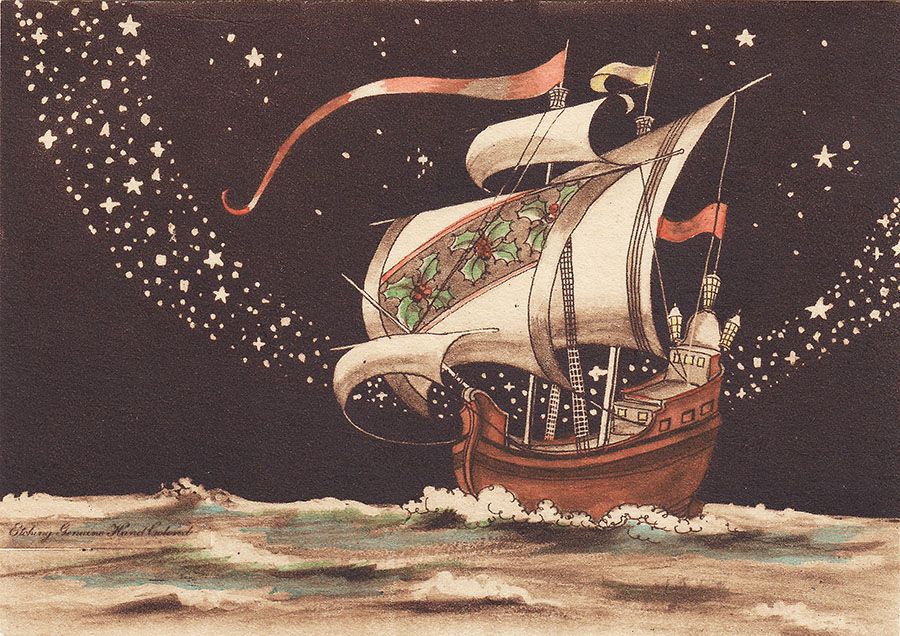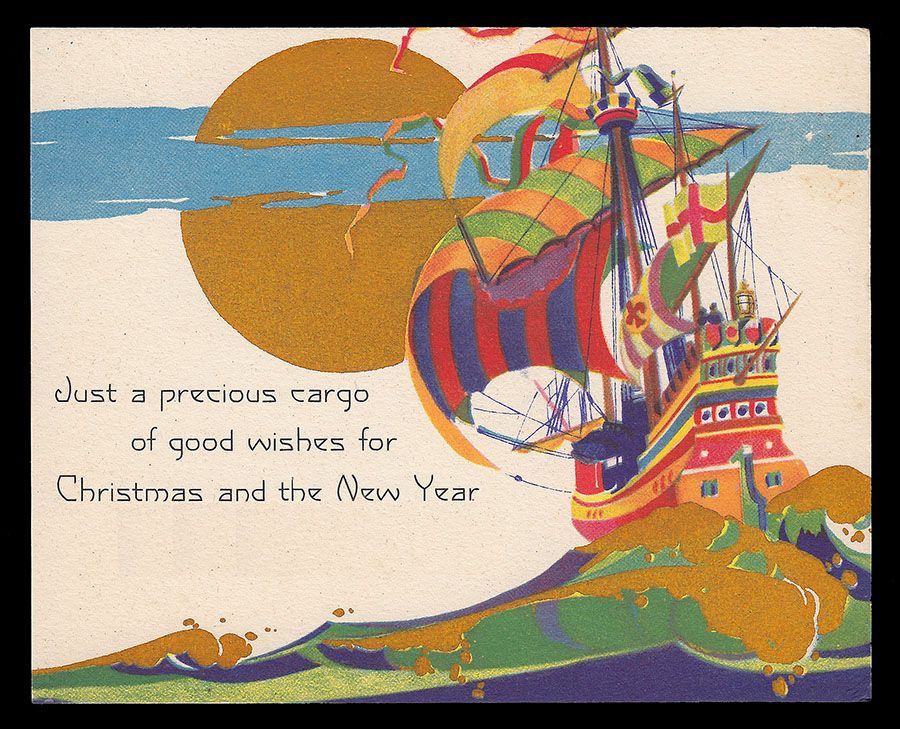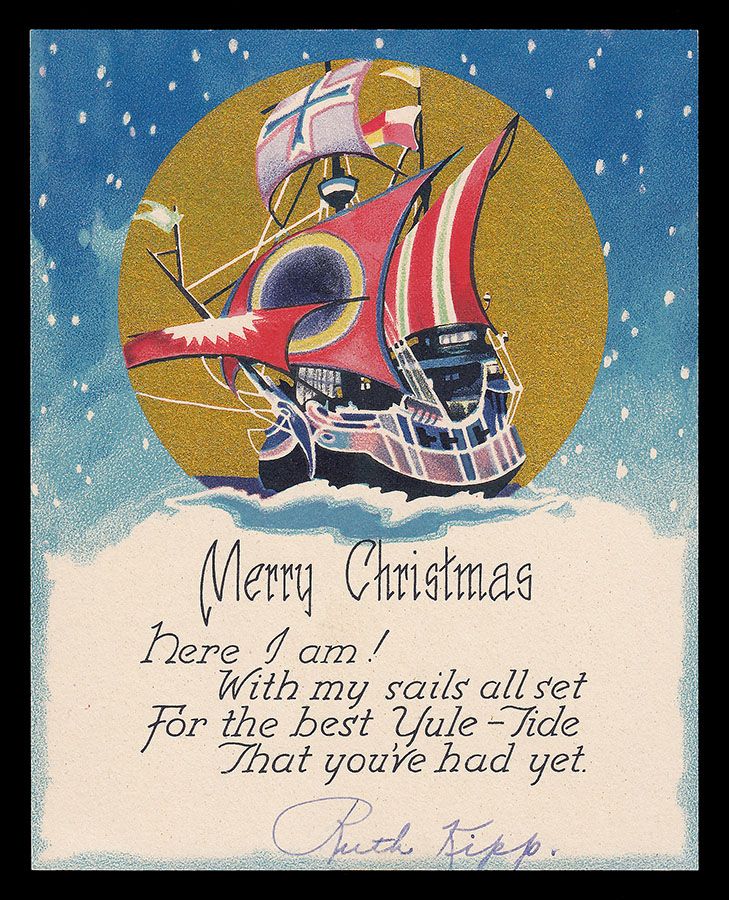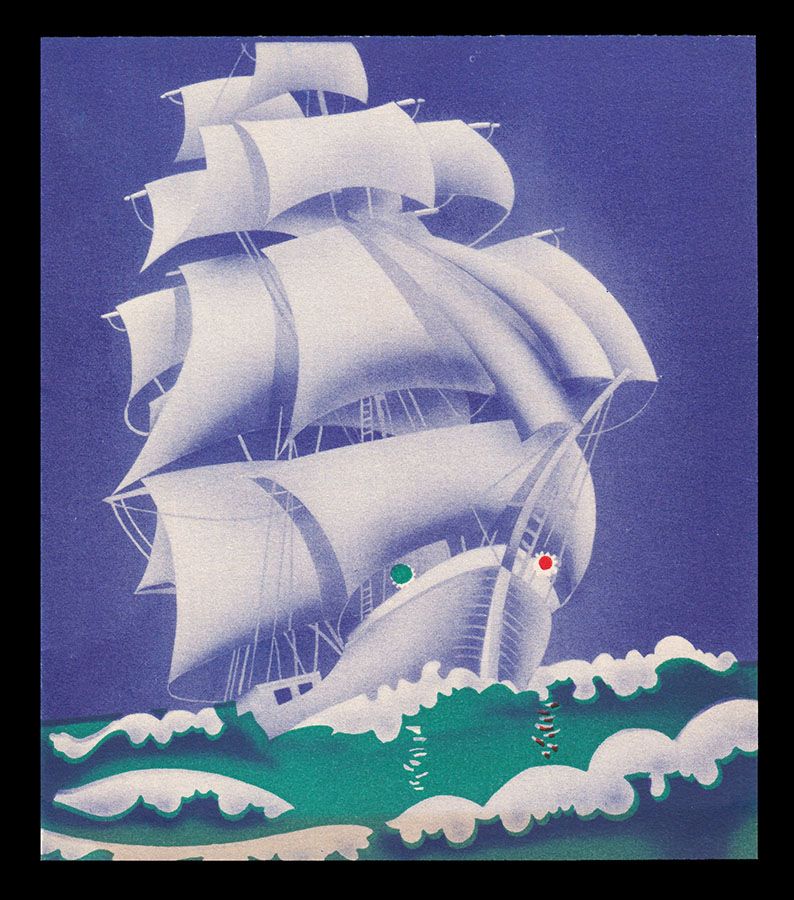Galleons and Galleons of Good Cheer!
by Richard Sheaff

Sheet music, 1915
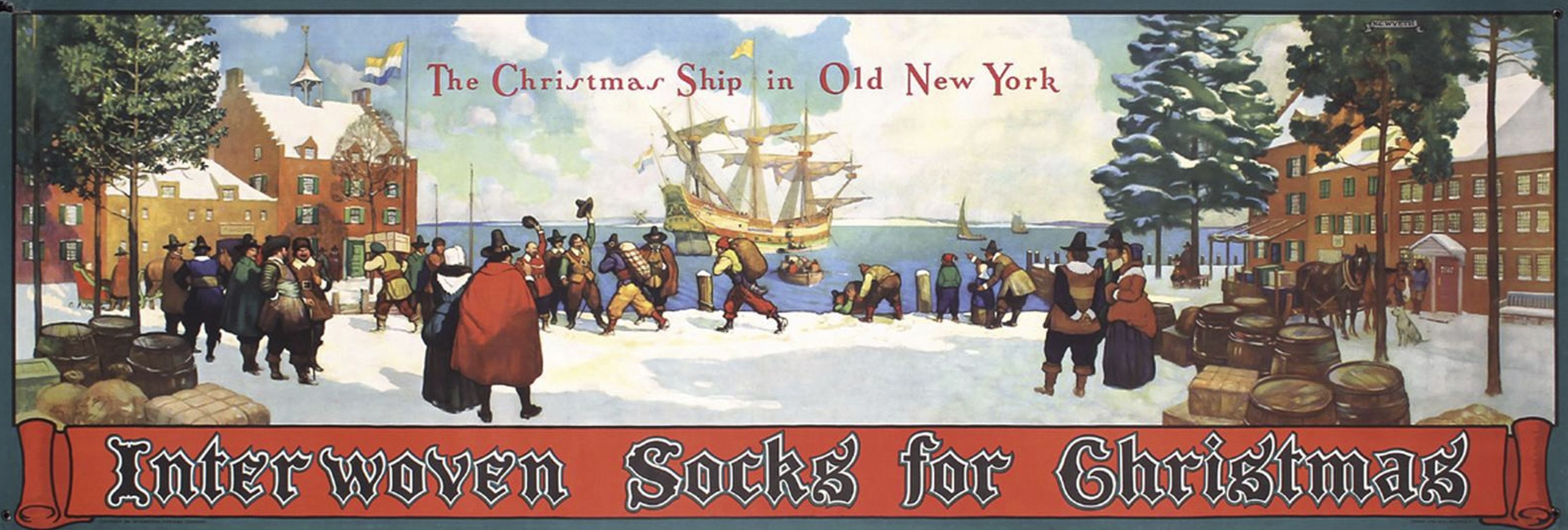
1928 Advertising, N.C. Wyeth

1915 book in a series for young women
As I got further into collecting vintage greeting cards—especially those of 1920-1940 vintage—I soon noticed an oddity . . . a then-commonplace but now never-seen symbol of Christmas. Christmas cards of the period frequently featured a ship on the high seas, an ancient galleon. What was that all about? How and why did a ship at sea symbolize Christmas? And if it somehow did, why is it no longer seen?
I believe the answer lies with a 1914 Good Samaritan campaign. A major effort was mounted across the USA to collect toys “. . . for those poor little children in Europe who are now homeless, sick and destitute because their fathers and brothers have been killed or crippled in the Great War over there.” A song “The Christmas Ship” written by one Henry S. Sawyer, gained popularity and was published as sheet music. Although the gathered goodies were actually to be shipped to Europe on a modern “large warship”, the cover of the sheet music was illustrated with an old galleon, “to represent The Spirit of the Christmas Ship.” This “nation-wide movement of love and charity by contributing toys, money, and useful gifts to the Christmas Ship!” was directed primarily at children.
The song starts:
Come, boys and girls, just listen to this news for you and me:
They’re going to send a Christmas Ship across the great blue sea!
It’s going to be filled with gifts for families abroad
who’ve suffered in this cruel war from fire, gun, and sword.
Now all the boys and all the girls will ev’ry effort bend
To see how many useful things they to the ship can send.
The back cover of the sheet music, published by the McKinley Music Company of NYC, carries extensive text about the project. It suggests forming clubs to gather gifts. It states that “One whole town in Illinois has been turned into a workshop for preparing gifts for the Christmas Ship. Every man, woman and child in LaRose is busy. The Sunday Schools are taking up collections; the Ladies’ Aid societies are making warm little garments; a moving picture company is planning a benefit; the young men will give a charity ball; the girls are making aprons; the little boys are going to have a pigeon sale, climbing to the belfry of the old church after the birds; while in the school are ‘penny boxes’ into which the pupils may drop their pennies. The women are planning a pie sale, besides social affairs where a small admission fee will make the Ship fund that much the larger.”
Thus, after the war in the 1920s and into the 1930s, a Christmas Ship galleon remained symbolic of the spirit of Christmas. The Arts and Crafts styling of many were artfully done.
Additionally, an ancient Christian tradition is likely relevant to the use of a ship image to celebrate Christmas in the early 20th century. Ships have been a part of Christian iconography since the days of the catacombs. The Bark (ship) of St. Peter symbolized the rough passages suffered by Christians making their way through troubled times. The term nave of a church derives from the Latin word for ship, navis.
The Catholic Barque of St. Peter references the fact that Peter, the first Pope, had earlier been a fisherman working from a boat. In those early days, when the use of the cross as a symbol was punished, Christian ship images sometimes had mast arrangements in a cross configuration, a disguise of sorts. Clement of Alexandria suggested using a “vessel flying before the wind” as a symbol. The church was sometimes referred to as a ship, with the bishop as helmsman. Other such references abound.
Stained glass ship images appear in churches; below are a couple examples.


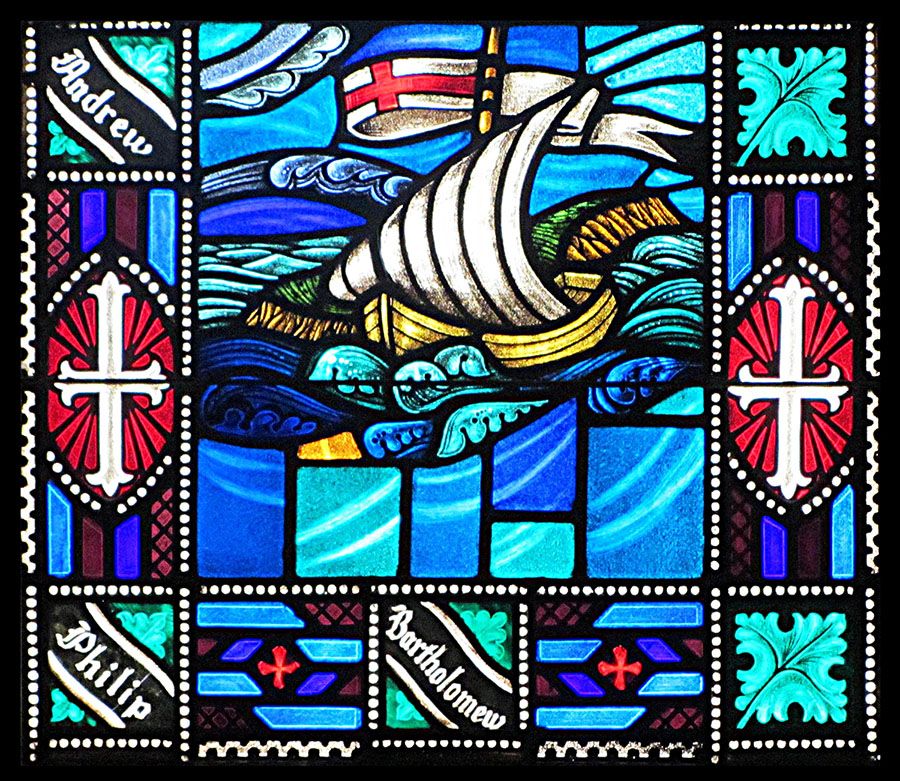
There are other precedents for ships as Christian symbols in connection with Christmas.


According to George Buday (The History of the Christmas Card, London 1954), there was also a brief period in the 1880s when ancient sailing ships were a popular Christmas card motif. One British maker even created sailing galleon pop-up cards, flat cards which turned into finely detailed three-dimensional ships when opened up. He is reported to have sold quite a large number of them.
A modern such pop-up ship card . . . .




